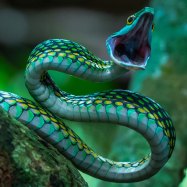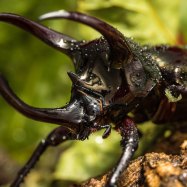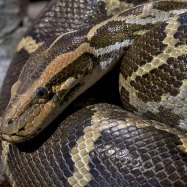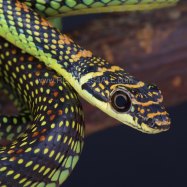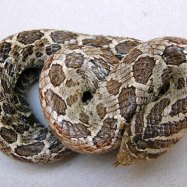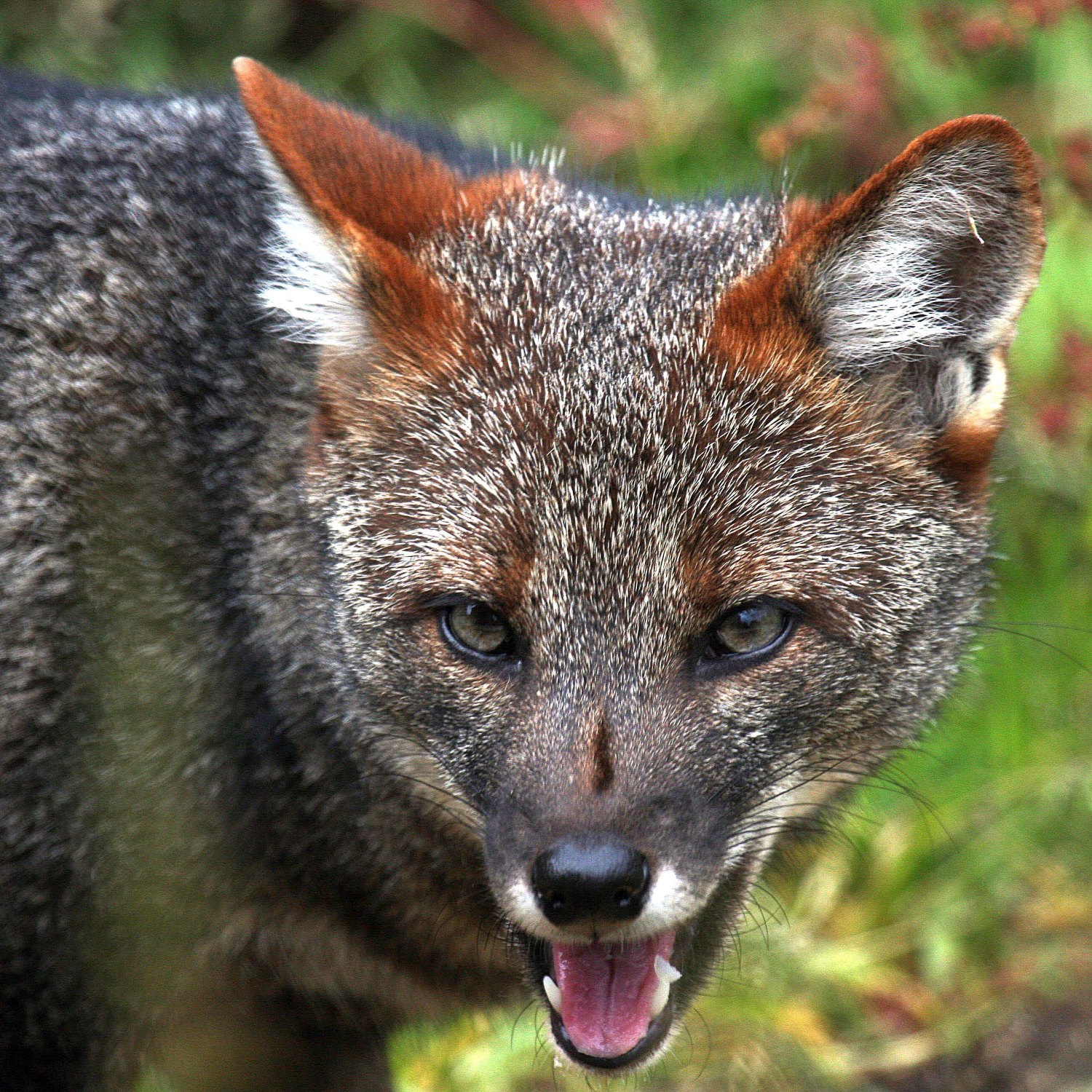
Darwins Fox
64-75 cm
Darwin's Fox, a small and slender member of the Canidae family, can be found on Chiloé Island and Nahuelbuta National Park. This elusive and rare animal measures between 64-75 cm in length and is known for its beautiful coat and keen hunting skills. Despite its charming appearance, this fox is considered vulnerable due to habitat destruction and hunting. Help protect this unique species and its home by supporting conservation efforts. #DarwinsFox #Canidae #Conservation
Animal Details Summary:
Common Name: Darwin's Fox
Kingdom: Animalia
Habitat: Temperate forests
The Elusive Darwin's Fox: A Rare Canine Species of Chile
In the wild and rugged landscapes of Chile, there lies a beautiful and elusive creature that has fascinated researchers, scientists, and wildlife enthusiasts for decades – the Darwin's Fox. Also known by its scientific name Lycalopex fulvipes, this small and slender mammal is endemic to Chile and can be found roaming in the temperate forests of Chiloé Island and Nahuelbuta National Park.Named after the legendary scientist Charles Darwin, who first described this species during his famous voyage to South America, the Darwin's Fox is a member of the Canidae family, which includes other carnivorous animals such as wolves and coyotes. However, this fox is unique and distinct, with its reddish-brown fur and small body size, making it a true gem of the Chilean wildlife Darwins Fox.
Let's take a closer look at this rare and fascinating creature and discover why the Darwin's Fox is a vital part of Chile's ecological balance.
A Unique Species with a Rich History
The Darwin's Fox, also known as Zorro de Darwin in Spanish, is an integral part of Chile's natural history and has been around for millions of years. It is believed that this species first arrived in South America, specifically Chile, during the Pliocene era, which is roughly 2-5 million years ago. However, the eyes of the world turned towards this elusive creature in the 19th century when Charles Darwin himself encountered it during his voyage on the HMS Beagle.During his visit to Chiloé Island, Darwin documented this species in his journal, describing it as "a new genus of fox." He was fascinated by its unique physical and behavioral characteristics, and his observations helped shed light on the Darwin's Fox's behavior and natural habitat.
However, the actual scientific study and documentation of this species did not start until the 20th century when several expeditions were undertaken to explore the wildlife of Chile, including the Darwin's Fox. Despite being recognized as a distinct and unique species in the early 20th century, much of the fox's biology and behavior remains a mystery, adding to its charm and fascination.
Intriguing Physical Characteristics
The Darwin's Fox is a small and slender carnivore, measuring between 64-75 cm in length, making it one of the smallest foxes in the world Diminutive Woodrat. It weighs between 2 to 3 kg and has a tail measuring around 25-30 cm. Its reddish-brown fur is dense and soft, allowing it to withstand the harsh and cold climate of its natural habitat.Apart from its small size and reddish-brown fur, the Darwin's Fox is also distinguishable by its long, pointy ears, and a bushy tail. Its eyes are dark brown, giving it a fierce yet charming appearance. Its small and slender body shape allows it to move swiftly and gracefully in the dense forests, making it an excellent hunter.
One of the most intriguing physical characteristics of this species is its sharp teeth and strong jaws, which are essential for its survival in the wild. With these powerful weapons, the Darwin's Fox can hunt and feed on various animals, from insects and small mammals to birds and reptiles.
An Elusive Creature of the Chilean Forests
The Darwin's Fox is a solitary creature and is rarely seen in the wild. Due to its elusive nature, it is tough to spot this fox in its natural habitat, making it one of the rarest species to see in Chile. It is mainly active during the night and spends most of its time hunting for food or resting in its den during the day.The temperate forests of Chiloé Island and Nahuelbuta National Park provide the ideal habitat for the Darwin's Fox to thrive. With a dense cover of trees, shrubs, and thick undergrowth, this species can easily hide and hunt for its prey, making it a perfect abode for the elusive creature.
However, the increasing human population and deforestation have caused a significant decline in the fox's natural habitat, with only a small percentage of its original habitat remaining. This has resulted in a decrease in its population, leading to it being classified as a vulnerable species by the International Union for Conservation of Nature (IUCN).
The Predatory Diet of the Darwin's Fox
As a carnivorous species, the Darwin's Fox primarily feeds on small mammals, insects, birds, fish, and reptiles. Its powerful jaws and sharp teeth allow it to hunt and feed on a wide variety of prey, making it a top predator in its ecosystem. Its diet may also include fruits and berries, depending on the availability of food in its habitat.The Darwin's Fox is an opportunistic feeder, and its diet may vary based on the season and availability of food in its habitat. During the summer, when food is abundant, it may hunt and feed on larger prey such as rabbits and small deer. However, during the winter months, when food is scarce, it may rely on smaller mammals and insects to survive.
The Impact of Humans on the Darwin's Fox
As mentioned earlier, the Darwin's Fox is facing a significant decline in its population due to the destruction of its habitat. Deforestation, urbanization, and other human activities have led to the fragmentation of the fox's natural habitat, making it difficult for the species to survive.Moreover, the introduction of non-native species, such as domestic dogs and feral cats, has also had a significant impact on the Darwin's Fox. These animals have been known to compete with the fox for food and have even attacked and killed the species, further endangering their already dwindling population.
The Chilean government has taken measures to protect the Darwin's Fox, such as implementing laws against deforestation and establishing protected areas to preserve their natural habitat. However, more efforts are needed to conserve this unique and precious species.
Conclusion
In conclusion, the Darwin's Fox is a unique and elusive species that has been an integral part of Chile's natural history for millions of years. Its name carries the legacy of Charles Darwin, who first described this species during his voyage to South America. With its reddish-brown fur, small body size, and powerful teeth, this gorgeous creature is an essential part of the Chilean ecosystem.However, the impact of humans on its natural habitat has led to a significant decline in its population, raising concerns about its future survival. It is crucial to protect and conserve this species, not just for its beauty and rarity, but for its vital role in maintaining the ecological balance of Chile's forests.
We must strive to learn more about the Darwin's Fox and raise awareness about its conservation. Through collective efforts, we can ensure that future generations get to witness and admire this magnificent creature, making sure that it remains a symbol of Chile's vibrant wildlife.

Darwins Fox
Animal Details Darwins Fox - Scientific Name: Lycalopex fulvipes
- Category: Animals D
- Scientific Name: Lycalopex fulvipes
- Common Name: Darwin's Fox
- Kingdom: Animalia
- Phylum: Chordata
- Class: Mammalia
- Order: Carnivora
- Family: Canidae
- Habitat: Temperate forests
- Feeding Method: Carnivorous
- Geographical Distribution: Chile, specifically on Chiloé Island and the Nahuelbuta National Park
- Country of Origin: Chile
- Location: Chiloé Island and Nahuelbuta National Park
- Animal Coloration: Reddish-brown
- Body Shape: Small and slender
- Length: 64-75 cm

Darwin's Fox
- Adult Size: Small to medium-sized
- Average Lifespan: 5-8 years
- Reproduction: Viviparous
- Reproductive Behavior: Monogamous
- Sound or Call: Unknown
- Migration Pattern: Non-migratory
- Social Groups: Solitary or in pairs
- Behavior: Nocturnal
- Threats: Habitat loss, introduced species, and diseases
- Conservation Status: Endangered
- Impact on Ecosystem: Keystone species
- Human Use: Poaching and habitat destruction
- Distinctive Features: Large ears and long, bushy tail
- Interesting Facts: Darwin's fox is one of the rarest canids in the world
- Predator: Human
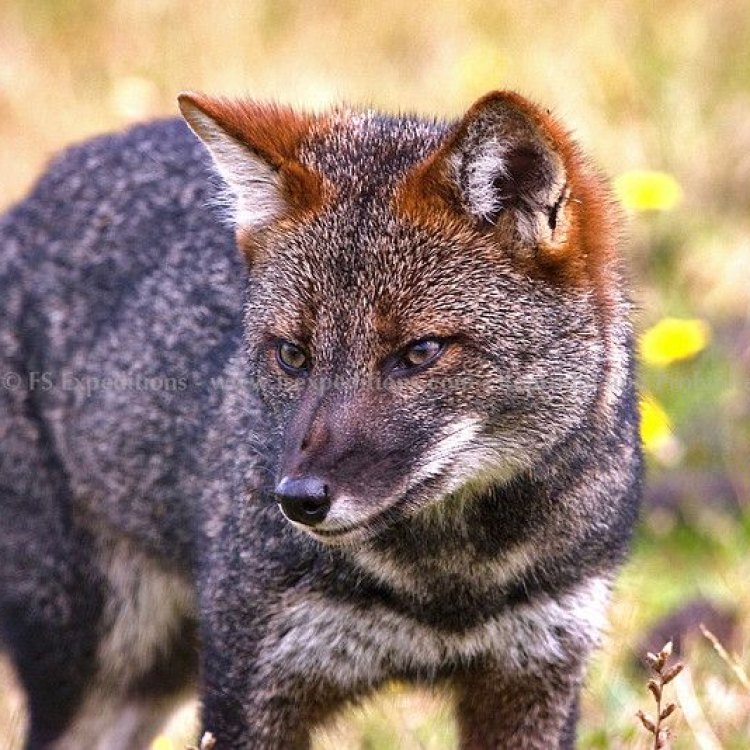
Lycalopex fulvipes
Darwin's Fox: An Endangered Icon of Evolution
In the lush ancient forests of Chiloé, a small island off the coast of Chile, a creature roams that captures the imagination of those who encounter it. The Darwin's fox, also known as the Darwin's Zorro or Chiloé zorro as it is known by the locals, is a small and mysterious canid species that has fascinated scientists and conservationists alike. From its unique physical features to its importance in the ecosystem, the Darwin's fox is a true icon of evolution. However, despite being a symbol of natural selection and adaptation, this species is currently facing numerous threats that have pushed it to the brink of extinction PeaceOfAnimals.Com. In this article, we will delve into the fascinating world of the Darwin's fox, exploring its distinctive features, behavior, and conservation status.Physical Characteristics
The Darwin's fox, or Lycalopex fulvipes, is a small to medium-sized canid that is endemic to the island of Chiloé. It is one of the smallest canids in the world, weighing only 3-5 pounds and measuring around 24 inches in length. What makes this fox truly unique and easily recognizable is its large, pointed ears and long, bushy tail. The ears help the fox to dissipate heat and enhance its hearing abilities, while the tail acts as a built-in blanket for warmth during the cold Chiloé nights. The fox also has a reddish-brown coat with a distinctive black stripe running down its back, making it not only adorable but also strikingly beautiful.Behavior and Reproduction
The Darwin's fox is a mostly solitary creature, although it can sometimes be found in pairs during the breeding season. It is nocturnal, meaning it is most active at night, and spends its days in dens either dug by themselves or repurposed from abandoned burrows of other animals. This secretive lifestyle is also one of the reasons why it has been difficult to study and understand this species in the wild Dorgi.In terms of reproduction, the Darwin's fox is viviparous, which means it gives birth to live young. The breeding season for this species is between August and October, and females can give birth to 1-5 pups after a gestation period of 55-60 days. Interestingly, Darwin's foxes are monogamous, meaning they mate with only one partner for life. This behavior is rare among canids and adds a layer of uniqueness to this species.
Threats to Survival
As with many endangered species, habitat loss is the main threat to the survival of the Darwin's fox. The island of Chiloé has experienced significant deforestation in the past century due to human development, forestry, and agriculture. This has greatly reduced the available habitat for the fox, pushing it into smaller and more fragmented areas to survive.Moreover, the introduction of non-native species has also had a devastating effect on the Darwin's fox population. Insects such as the European wasp, as well as predators like dogs and foxes, have had a negative impact on the fox's food sources and have even killed pups in some cases. Additionally, diseases brought by these introduced species pose a major threat to the health of the foxes.
Conservation Status and Importance in the Ecosystem
Given the numerous threats facing the Darwin's fox, it is not surprising that it is currently classified as an endangered species. The IUCN Red List has listed this fox as "critically endangered," with an estimated population of only 250 mature individuals. It is also protected under Chilean law, making it illegal to hunt or disturb this species.But why is the conservation of this species so important? As it turns out, the Darwin's fox plays a vital role in the ecosystem as a keystone species. This means that it has a disproportionate impact on the food web and the balance of the ecosystem. As a predator, it helps control the population of smaller animals, preventing them from overgrazing and potentially causing harm to the environment. Losing the Darwin's fox could have a cascading effect on the entire ecosystem, leading to detrimental consequences.
Human Threats
Despite its protected status, the Darwin's fox is still facing threats from human activities. One of the biggest threats is poaching, as the fox's unique features make it a target for the illegal wildlife trade. The bushy tail is often used as a decorative item, and the entire animal may be hunted for its fur or as a trophy. Habitat destruction due to human expansion is also a major threat, as the fox has limited options for finding suitable habitat for survival.Conservation Efforts
Fortunately, there are ongoing efforts to conserve the Darwin's fox and its habitat. The Chiloé National Park, established in 1982, covers a large area of the island and serves as a protected area for this species. The park's rangers work closely with local communities to raise awareness about the importance of the fox and the need for its conservation. The protection of remaining forested areas and restoration of degraded habitats are also crucial for the survival of the Darwin's fox.Additionally, scientific research and monitoring of the fox population have provided valuable insights into the species' behavior and health. This information is used to inform conservation strategies and assess the effectiveness of current efforts.
Interesting and little-known Facts
Despite being one of the rarest canids in the world, there is still much to be learned about the Darwin's fox. Here are some interesting and lesser-known facts about this fascinating creature:- The Darwin's fox is named after the famous naturalist Charles Darwin, who first collected a specimen of this species during his expedition in the early 19th century. The specimen was then brought to England and described as a new species.
- It is estimated that before human colonization, the Chiloé Island was home to 250-300 Darwin's foxes. Today, there are only about 250 individuals left, making it one of the most endangered canid species.
- The Darwin's fox is a very vocal animal, using a variety of sounds that range from high-pitched whistles to deep barks. However, its specific sounds and calls have not been studied in detail yet.
- In the past, the Darwin's fox was considered a subspecies of the South American grey fox, but genetic studies have revealed that it is a distinct species.
Conclusion
In conclusion, the Darwin's fox is a unique and fascinating species that continues to captivate scientists, conservationists, and visitors to Chiloé Island. From its distinctive physical features to its monogamous behavior and importance in the ecosystem, this small canid serves as an icon of evolution. However, its survival is currently threatened by human activities such as habitat destruction and poaching. It is therefore crucial to continue conservation efforts to protect this species and ensure its future existence. We must remember that the survival of the Darwin's fox is not only important for its own sake but also for the health and balance of the entire ecosystem. Let us strive to preserve this precious species for generations to come.

The Elusive Darwin's Fox: A Rare Canine Species of Chile
Disclaimer: The content provided is for informational purposes only. We cannot guarantee the accuracy of the information on this page 100%. All information provided here may change without prior notice.

